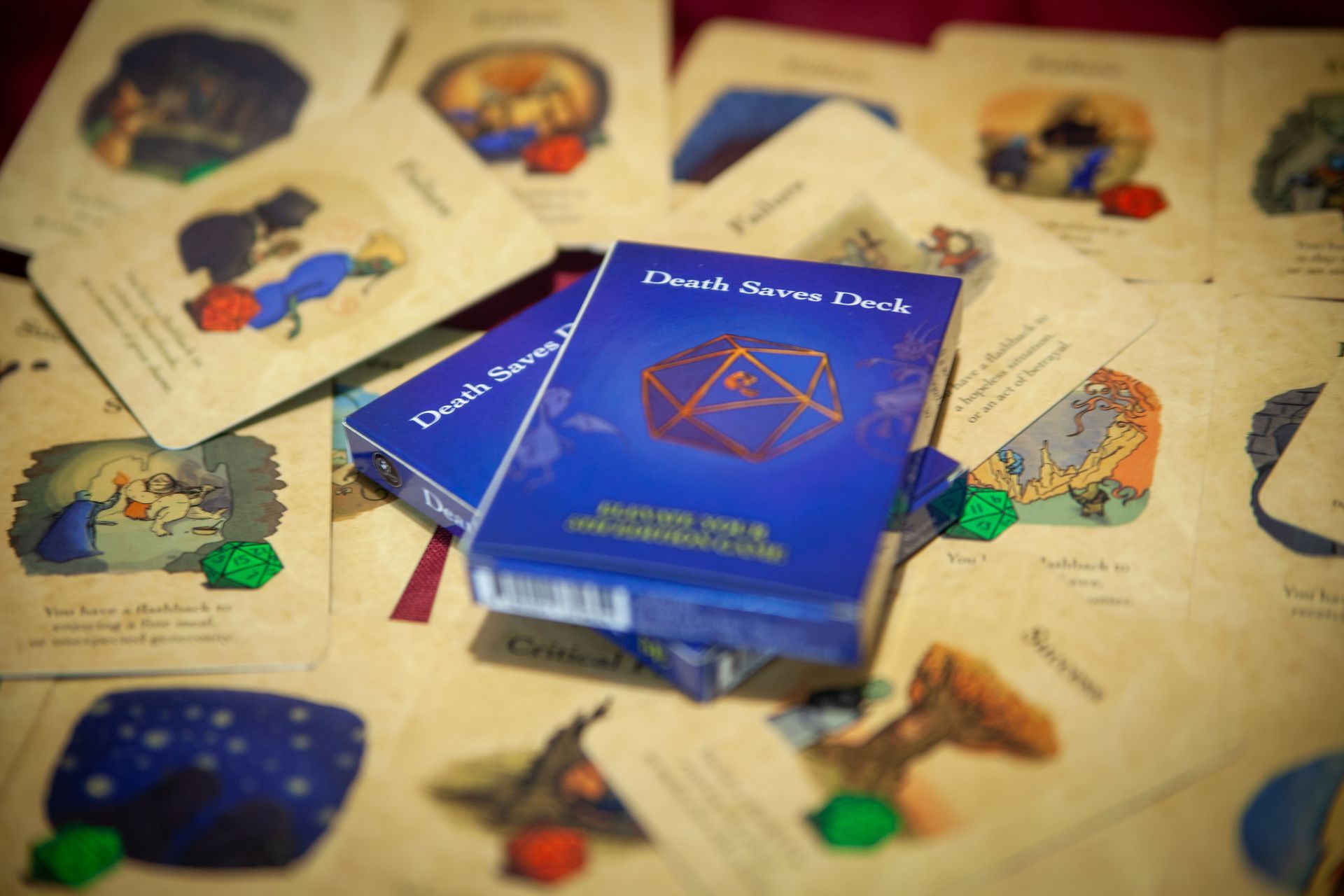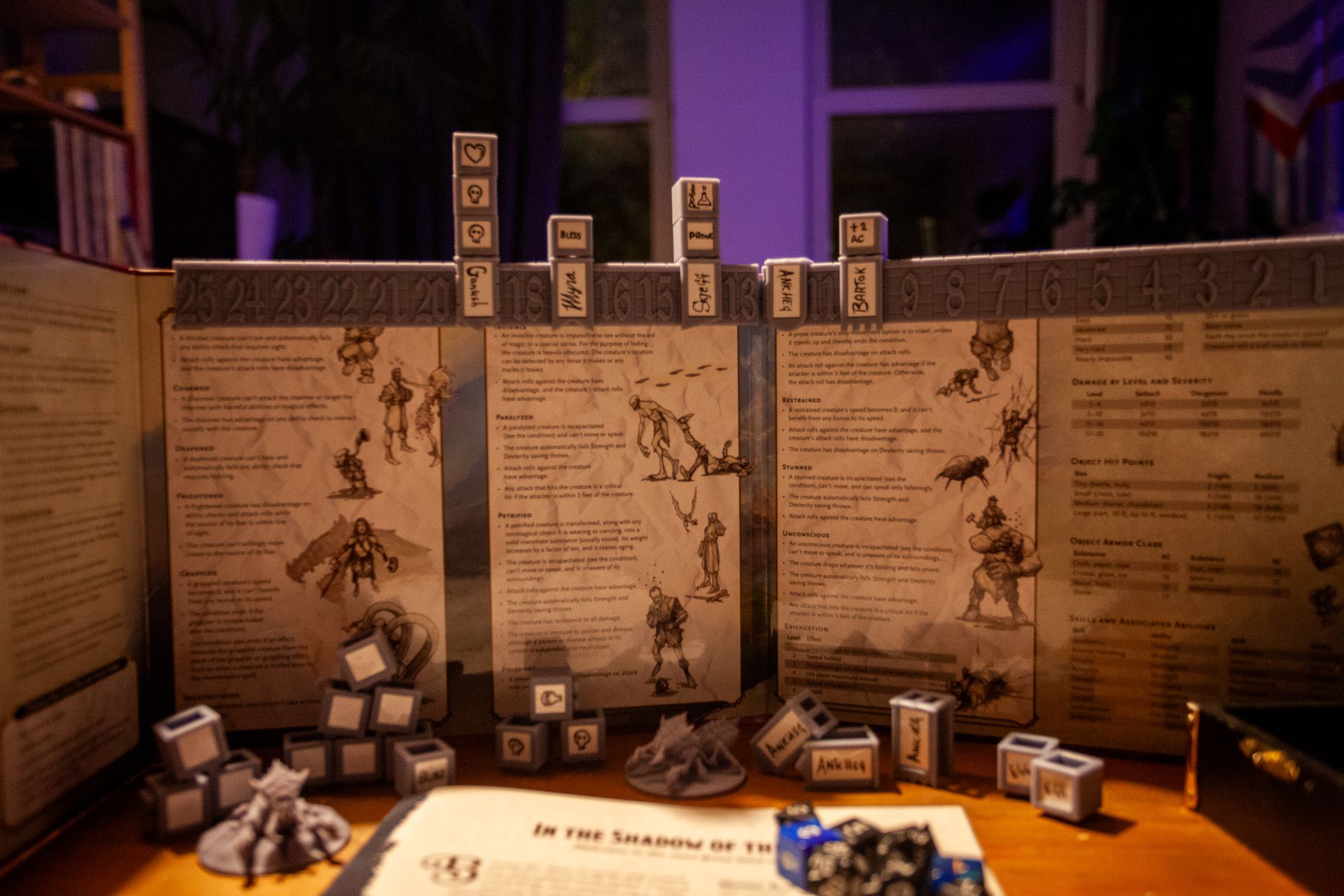10 Tips For Writing A Killer D&D One-Shot
We've Learned Some Tricks We'd Like To Share!

Writing one-shots—whether for publication or for your home game—is a different beast from crafting long-form campaigns. With limited time to tell a compelling story, every scene, encounter, and decision needs to be
punchy and
purposeful. Through designing
Cacklin Slayers’ Zineshots, we’ve learned a lot about what makes a great one-shot. Here are
10 key tips that helped us whip our adventures into shape!
1. Learn From The Best
Let's kick this thing off with reading tips!
- How to Write Adventure Modules That Don’t Suck (Goodman Games) – A collection of advice from 24 top adventure writers. Packed with different perspectives and examples, this book is a treasure trove of insights. Some essays resonate with us more than others, but there's absolutely something in here for everyone.
- The Anatomy of an Adventure (M.T. Black) – A well-written guide from a best-selling DMsGuild writer, covering successes, failures, and lessons learned. The authors enthusiasm for being an actual D&D adventure writer fueled our drive to publish our own one-shots.
- Writing With Style: An Editor’s Advice for RPG Writers (Ray Vallese) – A concise and invaluable resource for clear, engaging adventure writing. Without this book, our Zineshots would have been a stylistic mess.
- So You Want to Be a Game Master (Justin Alexander) – A deep dive into adventure design, including dungeon layouts, mysteries, heists, and more. In our opinion, the title is somewhat misleading: most of the techniques in this book are aimed at experienced DMs looking to refine their craft.
- Return of the Lazy Dungeon Master (Michael Shea / Sly Flourish) – A fantastic book on prepping adventures efficiently and ensuring every session delivers. There's a checklist in here with ingredients that every good adventure needs, which is an absolute blessing when structuring your one-shot.
2. Players Just Want To Have Fun
Worldbuilding is awesome, and your 500-page lore.doc is impressive—but in a one-shot, player engagement comes first. Players want to make decisions, solve problems, and do cool/fun/stupid things with their characters.
Yes, a little lore can add flavor, but always ask:
"Does this detail impact the players' choices?" If not, cut it.
Players don’t care
why there’s a wizard’s tower—they care about
how to get in and where the old man keeps his toys.
3. Keep It Short & Focused
Most one-shots last 3-4 hours, but players have a magic ability to stretch time—especially in D&D 5E combat. To avoid running long:
- Stick to
3-5 key scenes or locations.
- Limit combat to
2-3 encounters max.
- Have an optional encounter or random encounter table as a backup.
Ending early is better than cutting the finale short because people are falling asleep.
4. Establish a Clear Goal Early
As we've just said, there's no time to fool around! Players need
direction, and you don’t have time for a slow build-up.
Introduce the quest ASAP. Instead of starting with
“You all meet in a tavern…”, jump straight into the action!
Serum starts with the adventurers being ambushed by zombies. They learn right way that they have to stop a zombie apocalypse from happening, and where they have to go to get it done. A clear objective helps
keep players on track while still allowing meaningful choices (see Tip #7!).
5. Maintain a Fast Pace
One-shots thrive on momentum. Every scene should:
- Raise the stakes – Add urgency or unexpected twists.
- Provide a key decision – What the players do should matter.
- Be engaging – Combat, puzzles, roleplay—keep it interactive.
Setting an in-game time limit can naturally drive urgency. In Serum, the characters have one night to put an end to the zombie outbreak before it's too late.
Also, don’t waste time on long-winded introductions. Start in media res—mid-action, mid-travel, or even mid-fight. Roleplaying an opening scene with a quest-giver is rarely interesting (and can drag out waaaay too long if the players start haggling for better pay), so skip this part and focus on the exciting stuff you cooked up.
6. Write Boxed Text That Works
Many DMs (including us) skim or paraphrase boxed texts. However, this doesn't mean that you should ditch them! These read-out-loud texts are a powerful tool to set the mood, and confey important information. But keep 'em short! Two to three sentences max—any longer and the players' eyes glaze over.
- Start with the senses – What do they see, hear, smell, feel?
- End with action hooks – Doors, levers, treasure, mysterious sigils on the floor, and at the end: monsters and NPCs. People remember the last thing you said most clearly, so that's where you put things that you want players to engage with.
7. Include Meaningful Player Choices
One-shots are often more linear than campaigns, so how do you make the players' choices matter? Dilemmas.
Examples:
- Risk vs. Safety: Take the short but dangerous route, or the longer, safer path—but risk running out of time?
- Moral Choices: Help the kobold miners defend their home, or side with the ogre to drive them out?
- Secrets: In Costly Cargo, a noble hires them to deliver a sealed letter—should they read it first?
Every choice should have real consequences—affecting NPCs, encounters, or the adventure’s final outcome.
8. Plan a Strong (But Efficient) Finale
Sly Flourish advises that it's wise to end your session before a big battle. A great idea for your campaign sessions, but when you're DMing a one-shot, you don't have that luxury. It's tempting to go all-out with an epic combat finale, but in our experience, final battles can drag—by the time you get there, energy is low. Keep it exciting by:
- Lowering the end boss' hit points but increasing its damage output.
- Making combat optional. In Costly Cargo, the final fight can be avoided by saying the correct password.
- Planning the big battle early in the adventure, when energy is still up and everyone's pumped for action.
- Going for a non-combat climactic finale, like a high-stakes challenge that has to be overcome through skill checks.
- Providing alternative win conditions:
- The big boss surrenders if the characters take out all of its minions.
- In Serum, players can end the battle quickly by blowing up a tunnel.
9. Don’t Overthink Originality
D&D is built on fantasy tropes—lean into them! It's cool to come up with thought-provoking concepts, but don't sweat it. The magic of tabletop RPGs is that player choices make even the most familiar setup unique. Focus on fun, not reinventing the wheel. Feel free to fill your cave with goblins, put a dragon on a heap of gold at the end, and let the dice and players turn it into something unique.
10. All Attempts Grant XP
No D&D adventure is perfect. Rotmother's Rhyme has too much boxed text, Serum too little, and Costly Cargo crams too much content in the page count. But hey, we're having so much fun creating them, and our players loved playing them! We learn from our mistakes, gain xp, and level up!
Jot down whatever fun idea you've got cooking in your head. It doesn't have to be the next Curse of Strahd. Like Ernest Hemingway said: "The first draft of anything is shit, but all shit grants XP."

